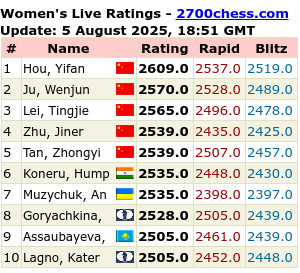It's been a while since I blogged : business travel occupying me, with many thousands of kilometres now clocked up, mainly because of two 12-hour flights, halfway across the world !
However now that I have all that behind me, I'm back into the last chess games of the present T4545 season.
The Magnum Ignotum U1600 team has not quite made the playoffs. We have to rely on other team's favourable results as well as winning ourselves, and , although there are still some games to finish, I think that we are out.
Magnum Ignotum U1800 is a different story. We are second in our division, but might go through to the play-offs as "best second place" or similar. Again dependent on final results of other teams In my own case though, 3 games played in the last week for the U1600 : 2 losses and finally, a win, which I will show here since it is the freshest game.
A surprise for me. Reconnaissance had prepared me for a Sicilian ( my opponent's recent outing ) a classical e5 reply ( the most likely ) or, from very old games, a French.
Imagine my surprise when 2...d6 was wheeled out after e5 and I was White facing the defence I play most as Black : the Philidor !
Despite chat afterwards from my opponent that he didn't know it was the Philidor, my suspicious nature thought he played it against me deliberately, perhaps to see my reaction, perhaps to provoke me into relaxing against it. As it turned out, it wasn't the best choice for him - I knew what I had to do.
The interesting thing about this game is, that having played it as Black for a while, as White, I can better see the reasons why some moves in the Philidor are required.
For example, an early exd for Black is not the best and unless there is compensation, is actually quite dubious, as it surrenders the centre and releases tension too quickly. The Larsen variation involves this early exchange, but compensates with a king-side fianchetto to switch to a hypermodern-style in its attack on the centre.
Similarly, c6 is really required as it stops knights arriving on d5, as well as freeing c7 as a possible support square for the queen.
Not knowing this, my opponent played (or even omitted to play ) moves that are essential in the Philidor, as well as wasting supposedly freeing moves such as 7...Bg4, which was met with 8.f3, reducing the black Queen Bishop to a sideline for the rest of the game.
In the Philidor, White's threat of Nf5 is uncomfortable, as it intends to remove the very useful King Bishop on e7, so Black needs to play g6 at some point to stop it. In this game, we had Nf5 but no g6, so after the White knight arrives on f5, further moves such as 11. Bg5 increase the pressure on Black easily.
In fact after 12. Nxe7, 14. Nd5 forcing the Queen back, and finally the Knight-for-Bishop exchange on f6, I just felt very comfortable. The f6-pawn is pinned against the Black Queen and there's a nice open g-file for me : a good position to be in !
Here I had ideas of f4, Qf4 ( hitting f6 ) as well as Qd5 or Bd5. A lot of good moves, a lot of flexibilty compared to Black's limitations.
I chose Bd5 with the intention of provoking a pawn structure change and subsequently attacking the d6 pawn.
As it turned out, I switched to a more forcing attack, with f4 to push back the knight and bishop ( ie Nd7, f5, Bh6, Rde1 ) and produced a position rich in attacking possibilities for White that almost played itself, as Black was forced to defend the mate threats on the g-file.
 |
| 22..Nc5 |
A few moves later, despite being ahead in material, Black is severely pressured, as White has mating threats with Bf6 and Qh6 that force Black's Queen to defend the g-file....
 |
| 25. Bxf6 |
 |
| Black is forced from the g-file : mate will follow |
Yes, there was the satisfaction of a win, but the real learning was seeing the Philidor from the 'other side', and, knowing the Black plans, being able to use White to frustrate them.
Knowledge is power, so when you know how someone is supposed to play, when he doesn't you really do have an advantage.



3 comments:
Good game, and I am in love with those randomly used arrows...
Looks like 22. ... Nc5 is the losing mistake. If black plays 22. ... Qf8 he still has a decent game although the akward placing of his bishop on h5.
I can only say that this is a well played game by white. Congrats.
@Chesstiger: Thanks. It was enjoyable mainly as I knew what I wanted to do and Black helped me a lot ! I also think a break from chess paid dividends in interest and concentration.
@Heinzk: Random ?! Intentionally placed, I think ;-)
Post a Comment